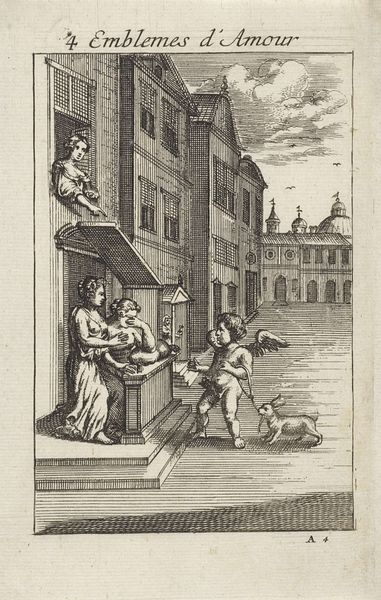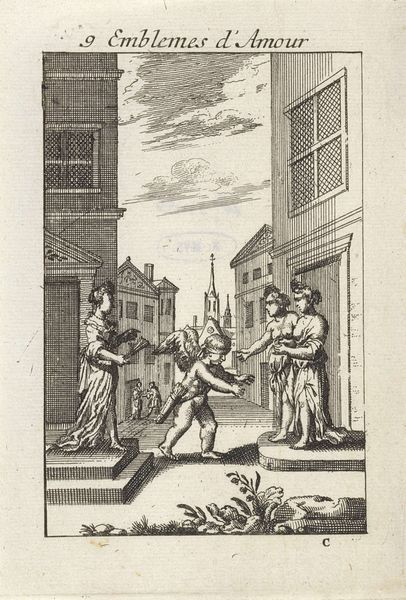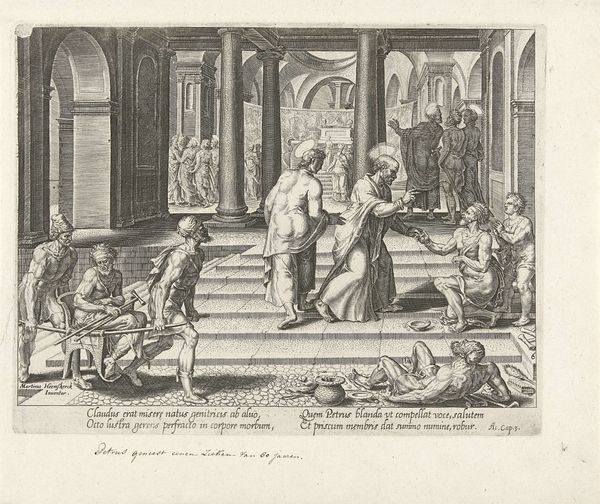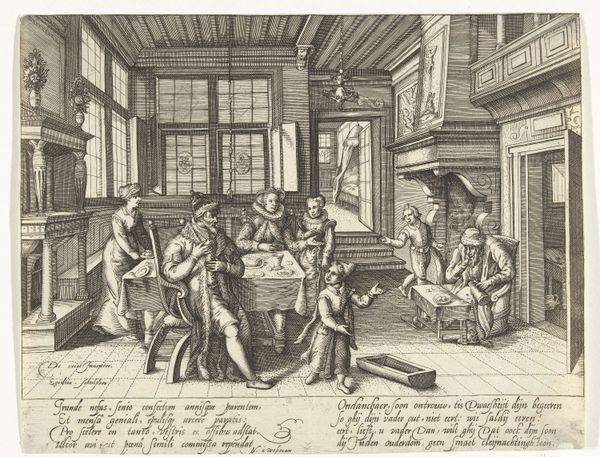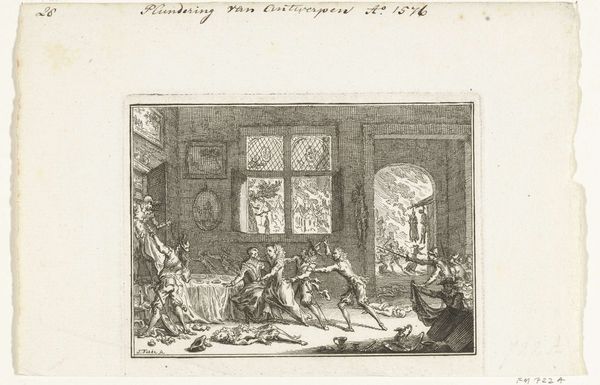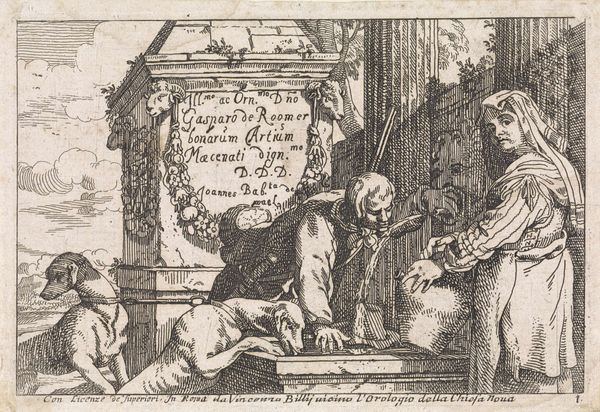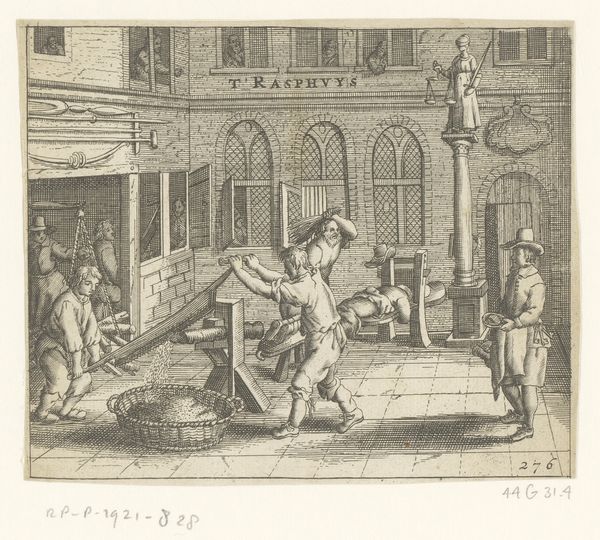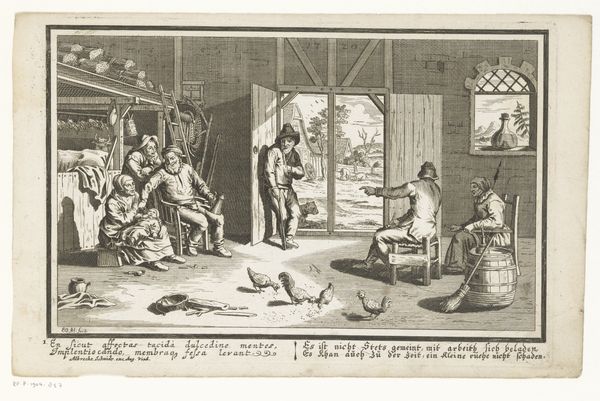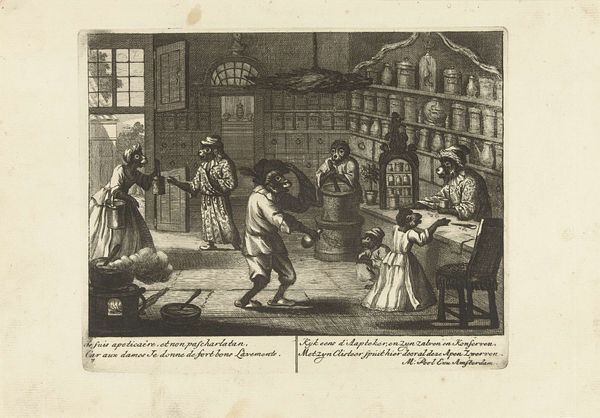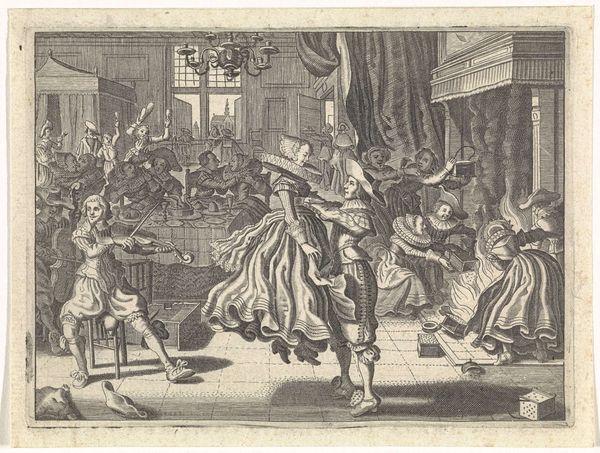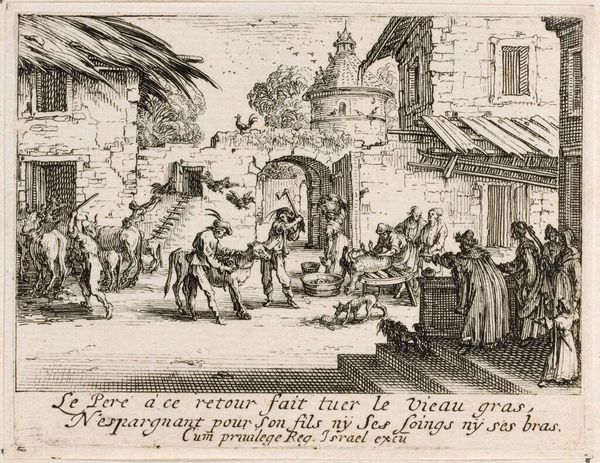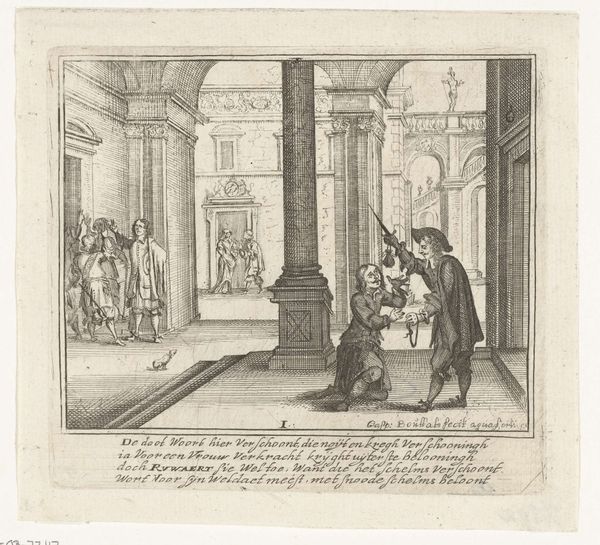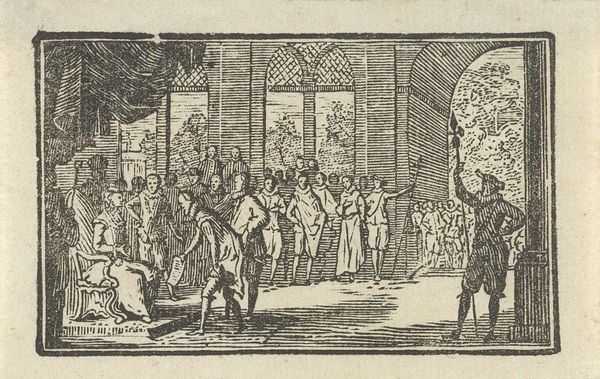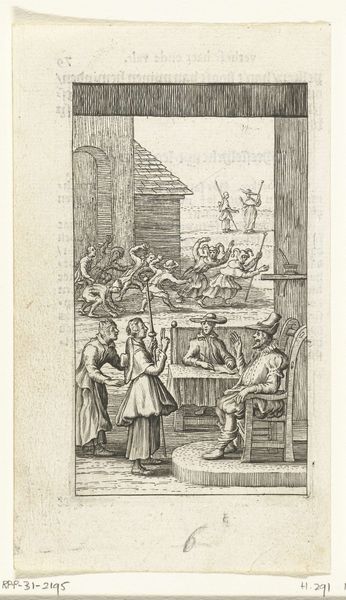
Legendes van de gravin met 360 kinderen (1276) en de zeemeermin gevangen in de Purmer (1403), ca. 1600 1608 - 1610
0:00
0:00
print, engraving
#
narrative-art
#
pen drawing
#
dutch-golden-age
# print
#
landscape
#
figuration
#
genre-painting
#
history-painting
#
engraving
Dimensions: height 78 mm, width 178 mm
Copyright: Rijks Museum: Open Domain
Curator: Here we have a 17th-century engraving by Claes Jansz. Visscher, created sometime between 1608 and 1610. Its title is rather lengthy: "Legends of the Countess with 360 Children (1276) and the Mermaid Captured in the Purmer (1403)". It’s quite the narrative packed into a single print, isn’t it? Editor: It certainly is. My first impression is one of curiosity mixed with slight discomfort. The scenes, sharply rendered through engraving, have a matter-of-fact quality that somehow heightens the strangeness of these mythical or legendary events. The Countess's birthing scene feels almost mundane, contrasting starkly with the sheer impossibility of bearing so many children simultaneously. And the mermaid! It evokes feelings of displacement and captivity, as she seems utterly out of place in the doorway of a simple brick house. Curator: That "matter-of-factness" is quite typical of Dutch Golden Age sensibilities, even when depicting fantastical subjects. Artists of this period aimed for a certain realism, grounding their images in recognizable settings. For example, domesticity serves as a familiar symbol for women, reproduction, and wealth, yet we know it does not typically extend to literally having 360 children. It amplifies the cultural anxiety of "too muchness." Note the way Visscher frames these events within specific dates—1276 and 1403. Do these details add veracity or critique the stories? Editor: I agree, placing these fantastical narratives within seemingly historical moments adds layers of meaning. Are we meant to interpret these scenes literally, or are they symbolic commentaries on societal issues of the time? The mermaid image, particularly, sparks my interest. The attempt to subdue her is incredibly telling. Consider the Dutch Republic's reliance on water and maritime activities. Here, the mermaid could represent a struggle to control nature and otherness, possibly even embodying early colonial attitudes towards those deemed "savage" or "untamed." Curator: And the mermaid myth carries associations that extend much further. Throughout European art history, mermaids function as symbols for the dangers of the sea. In earlier eras, such an image served as a memento mori, referencing the inevitability of death and decay; thus, such beings acted as warnings. Yet, the mermaid retains ambiguity as well: does the "pushing [of] a horse against the wall" describe dominance of culture and "logic" over something unknowable or untameable? It seems Visscher’s rendering provides fodder for multiple symbolic readings. Editor: Absolutely, it's the dual nature of these symbols, that act as both historical references and contemporary allegories. It leaves us contemplating the lasting power of narrative and its ability to shape, and perhaps even distort, our understanding of history and cultural identity. Curator: Indeed. It showcases how visual symbols perpetuate over time, shaped by both their historical contexts and contemporary interpretations, resulting in cultural continuity across eras.
Comments
No comments
Be the first to comment and join the conversation on the ultimate creative platform.
